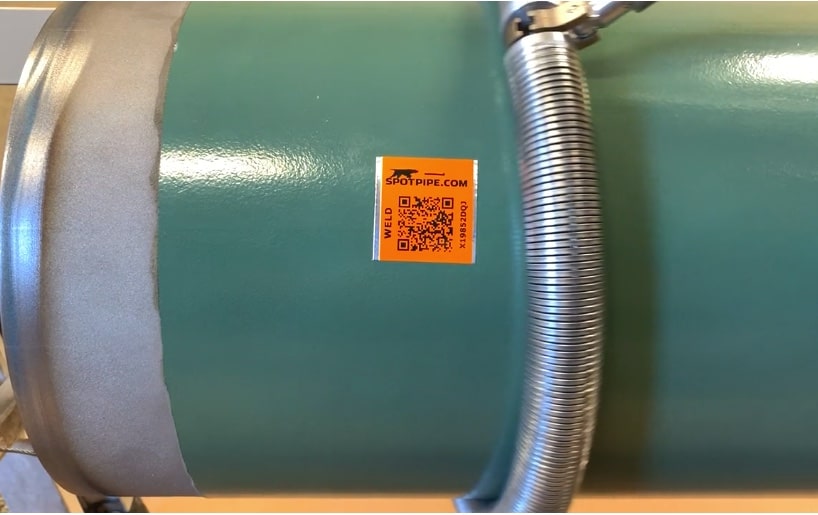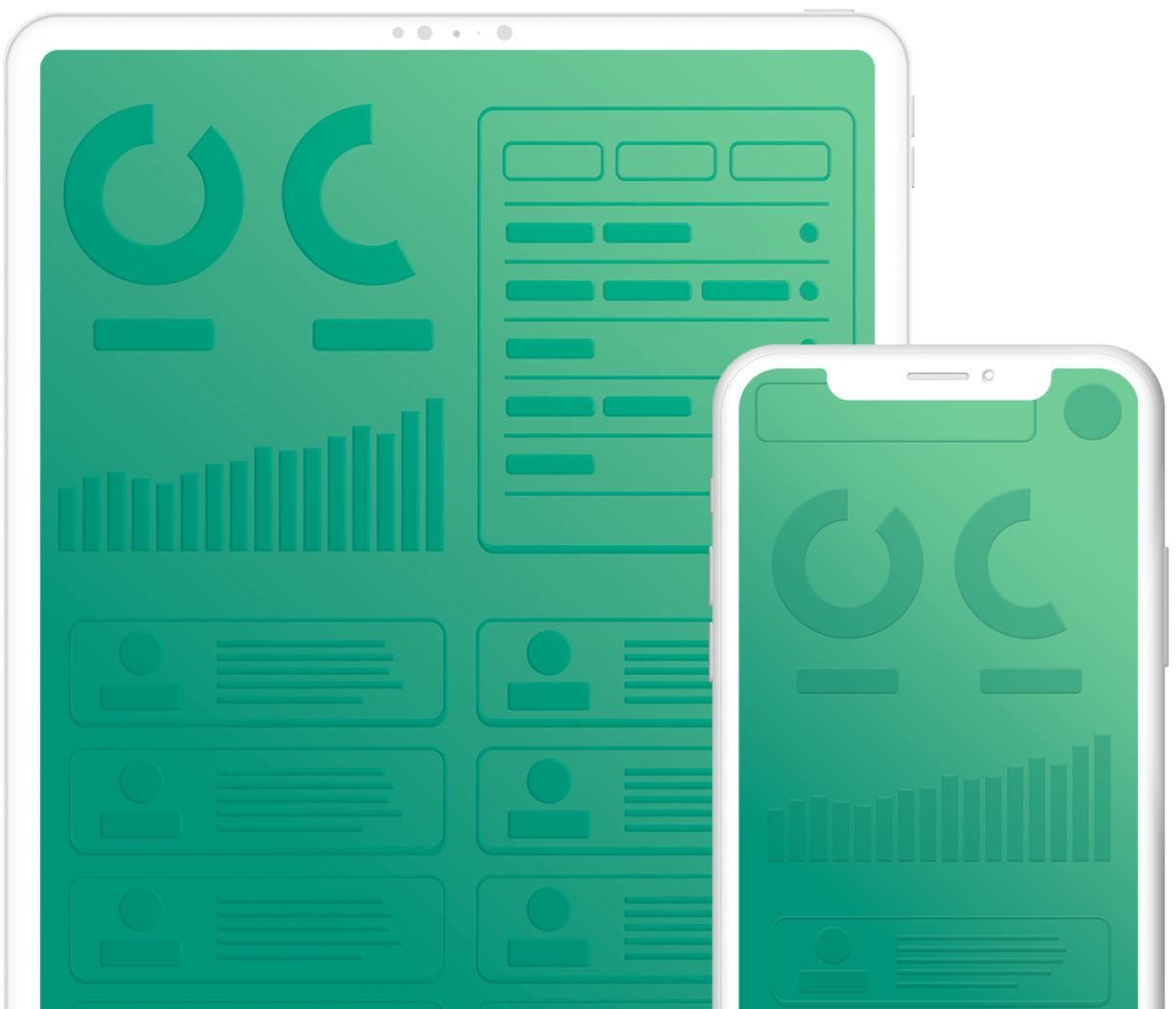PHMSA’s New Pipeline Safety Rule: Navigating Regulatory Changes with Limited Enforcement Discretion
The Pipeline and Hazardous Materials Safety Administration (PHMSA) recently issued a Notice of Limited Enforcement Discretion regarding its new pipeline safety rule. This development underscores the ever-changing landscape of regulatory compliance in the industrial sector and the need for adaptable, efficient solutions to manage these changes.
Leveraging TRU for Effective Data Management Amid PHMSA’a Enforcement Discretion
With the enforcement discretion allowing operators to comply with either updated or previous standards until January 1, 2025, companies now face the challenge of managing dual compliance paths. This scenario highlights the critical need for robust, flexible data collection and management tools. Enter TRU, a digital solution designed to safeguard critical industrial assets and streamline compliance processes.

Simplifying Compliance Amidst Regulatory Change with Real-Time Data and Enhanced Security
TRU’s app offers a powerful answer to the complexities introduced by regulatory changes like PHMSA’s recent rule. By providing real-time data collection, a secure audit trail, and high-level security, TRU enables companies to easily track compliance with both old and new standards. This flexibility is crucial during transition periods, allowing operators to adapt swiftly to regulatory updates without disrupting ongoing operations or compromising safety.
Driving Efficiency and Simplified Compliance Amidst Regulatory Shifts with Proven Digital Solutions
As we navigate these regulatory shifts, TRU stands ready to support industrial operators with simple digital solutions that optimize operations and ease compliance concerns. By leveraging TRU’s proven digitalization tools and expert support, companies can make better decisions with better data, ensuring they’re well-prepared for whatever regulatory changes may come. With clients seeing a 390% ROI in the first year alone, TRU not only simplifies compliance but also drives significant efficiency gains across all levels of business operations.
Understanding Custom Workflows
Custom workflows are tailored processes designed to streamline and enhance decision-making in real-time scenarios. At TRU, we specialize in creating these workflows to meet the unique needs of each client’s situation or organization. Our custom workflows help improve efficiency, increase productivity, and ensure that tasks are completed in a structured and systematic manner. TRU’s custom workflows include personalization, scalability, integration, data-driven insights, and compliance. By leveraging TRU’s expertise in custom workflows, businesses can optimize their operations to make quicker, more informed decisions. This leads to improved overall performance and reduced errors.

Importance of Real-Time Decision Making
Real-time decision-making is crucial in today’s fast-paced business environment. It allows organizations to respond quickly to changing scenarios and seize opportunities as they arise. TRU specializes in enabling and optimizing real-time decision-making through our custom workflow solutions. By leveraging custom workflows, companies can streamline their decision-making processes and ensure that key data is available when needed. By partnering with TRU, organizations can make more informed choices, increase operational efficiency, and ultimately gain a competitive edge in the market. Our expertise in custom workflows and real-time decision support empowers businesses to thrive in dynamic environments.
How Custom Workflows Enhance Decision-Making
TRU’s custom workflows play a crucial role in enhancing decision-making processes. By tailoring workflows to specific needs, organizations can streamline operations, increase efficiency, and adapt quickly to changing circumstances. With custom workflows, decision-makers gain the ability to customize the flow of information, automate repetitive tasks, and ensure that critical data is accessible in real-time.
Our approach focuses on customizing information delivery, automating repetitive tasks, and providing real-time access to critical data. TRU’s workflows seamlessly integrate with existing systems, ensuring decision-makers have the most up-to-date information at their fingertips.
By implementing TRU’s custom workflows, organizations gain a competitive edge through better outcomes, reduced risks, and the ability to respond swiftly to market changes. Our expertise ensures that each client’s unique challenges are addressed, maximizing the impact on their decision-making capabilities and driving business success.
Designing Custom Workflows for Efficiency
At TRU, we specialize in designing custom workflows that streamline tasks and improve decision-making. Our tailored processes create efficient systems that cater specifically to each organization’s unique needs. TRU’s custom workflows are built to optimize processes, allowing for smoother operations and quicker responses to real-time situations.
We focus on enhancing efficiency by carefully analyzing your existing processes and identifying areas for improvement. TRU’s custom workflows eliminate unnecessary steps, reduce errors, and ensure tasks are completed in a timely manner. Our approach combines industry best practices with cutting-edge technology to create solutions that drive productivity and performance.
TRU’s workflow design process involves close collaboration with your team to understand pain points and goals. We then leverage our expertise to create intuitive, user-friendly workflows that seamlessly integrate with your existing systems. Our solutions are scalable and adaptable, evolving with your organization’s changing needs.
Implementing Custom Workflows in Your Business
TRU specializes in helping businesses implement custom workflows that optimize operations and enhance decision-making. Our process begins by working closely with you to identify key areas that can benefit from customization. We analyze your existing procedures to pinpoint opportunities for improvement and efficiency gains. Our team at TRU designs custom workflows tailored to streamline and optimize specific tasks within your organization. We ensure these workflows integrate seamlessly with your current systems, improving efficiency and accuracy in your operations without disrupting your business.
By implementing TRU’s custom workflows, you’ll enhance your real-time decision-making capabilities. Our structured and automated processes for data analysis provide you with timely, actionable insights. This empowers your team to make informed decisions quickly and confidently. TRU’s expertise in custom workflow implementation helps businesses across various industries improve their operational efficiency, reduce errors, and respond more effectively to market changes. Let us help you transform your business processes and drive sustainable growth.
Real-Time Data Integration in Custom Workflows
TRU’s approach to real-time data integration involves connecting your custom workflows with live data sources across your organization. We create robust data pipelines that feed real-time information directly into your workflows, providing instant access to critical insights.
By leveraging TRU’s expertise in real-time data integration, you can:
- Streamline processes by automating data collection and analysis
- Optimize performance through continuous monitoring and instant adjustments
- Enhance your customer experience with personalized, timely interactions
Our custom workflows with real-time data integration empower you to act promptly on emerging trends, potential issues, or new opportunities. This agility allows you to stay ahead of the curve in your industry.
TRU’s solutions are scalable and adaptable, ensuring that as your data sources grow or change, your workflows continue to deliver accurate, timely information. We also prioritize data security and compliance, implementing robust measures to protect your sensitive information.
With TRU’s real-time data integration in custom workflows, you’ll transform your organization’s ability to make data-driven decisions quickly and confidently.
Maximizing Decision-Making Speed with Custom Workflows
Custom workflows help businesses make decisions quickly by streamlining processes and eliminating unnecessary steps. By tailoring workflows to specific needs, organizations can ensure that only relevant information is presented, enabling faster decision-making. TRU’s custom workflows are designed to optimize efficiency and reduce delays in real-time decision-making, ultimately leading to improved overall performance and agility in responding to rapidly changing situations. Our solutions are built to handle real-time data, ensuring that your decisions are based on the most current information available. TRU’s workflows can quickly adapt to changing situations, providing the agility needed in today’s fast-paced business environment.
Challenges and Solutions in Custom Workflow Adoption
At TRU, we recognize the challenges organizations face when adopting custom workflows, such as resistance to change, knowledge gaps, and integration difficulties. Our tailored approach helps clients overcome these hurdles effectively. TRU employs a comprehensive change management strategy to address resistance, clearly communicating the benefits of custom workflows to enhance efficiency, collaboration, and real-time decision-making. We provide intuitive, role-specific training programs to bridge knowledge gaps, ensuring all employees understand how to leverage the new workflows.
TRU’s approach includes ongoing support, regular feedback sessions for continuous improvement, and scalable designs that grow with your organization. By partnering with us, you’ll not only overcome adoption challenges but also unlock significant benefits. Our tailored workflows enhance efficiency, improve collaboration, and empower real-time decision-making, leading to increased productivity and better outcomes for your business.
Beneficial Outcomes of Leveraging Custom Workflows
TRU’s custom workflows deliver significant advantages to businesses by streamlining processes, reducing errors, and improving efficiency in decision-making. Our tailored solutions enable smoother operations and faster response times, precisely aligned with your specific needs. TRU’s custom workflows drive increased productivity by automating routine tasks and optimizing resource allocation. This allows your team to focus on high-value activities that require human insight and creativity.
Improved data accuracy is another key benefit of TRU’s custom workflows. Our systems integrate real-time data validation and cross-checking mechanisms, significantly reducing the risk of errors and ensuring decisions are based on reliable information. TRU’s custom workflows enhance your organization’s adaptability to changing circumstances. Our flexible designs allow for quick adjustments to workflows as market conditions or business needs evolve, ensuring your processes remain effective and relevant. By partnering with TRU to implement custom workflows, you’ll transform your operations, achieving greater efficiency, accuracy, and agility in your decision-making processes. Let us help you unlock these benefits and drive your business towards sustained success. Better Data Starts Here.
Introduction to Data Automation in the Industrial Sector
Data automation is transforming the industrial sector, enhancing compliance, security, and efficiency. At TRU, we leverage cutting-edge technology to streamline processes and ensure data accuracy. Our automated systems can reduce operational downtime, enabling real-time monitoring, trend analysis, and robust security protocols.
TRU’s data automation solutions empower businesses to make swift, data-driven decisions that are crucial in today’s digital landscape. While implementation can present challenges, the benefits—from improved compliance to competitive advantage—are substantial.

Importance of Compliance in the Industrial Sector
In the industrial sector, compliance is crucial for maintaining security and operational integrity. At TRU, we understand that compliance ensures companies follow specific rules to protect their workers and the environment. Our solutions help in preventing accidents and ensuring smooth operations. Without proper compliance measures, companies risk facing penalties, legal issues, and damage to their reputation. TRU believes that following regulations is not just about avoiding trouble; it’s about creating a safe and trustworthy environment for everyone involved in the industrial sector. We empower forward-thinking companies to view compliance not as a burden, but as an opportunity to enhance operations, build trust, and gain a competitive edge in the market. TRU’s comprehensive compliance solutions enable our clients to stay ahead of regulatory requirements, fostering a culture of safety and excellence that goes beyond mere checkbox compliance.
Role of Data Automation in Ensuring Compliance
Data automation plays a crucial role in ensuring compliance within the industrial sector, and TRU is at the forefront of this technological revolution. By leveraging TRU’s advanced automation solutions, companies can streamline their regulatory reporting and consistently meet necessary standards and regulations. TRU’s automation technology not only reduces errors and the risk of non-compliance but also significantly cuts down on time and costs associated with manual reporting.
TRU’s automated data collection and reporting create an auditable trail, improving traceability and making it easier for our clients to demonstrate compliance during inspections. This level of transparency and accuracy ultimately enhances the overall security and integrity of an organization’s operations and data.
By partnering with TRU for data automation in compliance, industries can shift from a reactive to a proactive approach, identifying and addressing potential issues before they become violations. TRU’s solutions empower businesses to not just meet regulatory requirements, but to excel in their compliance efforts, setting new industry standards for operational excellence and risk management.
Understanding Security Challenges in the Industrial Sector
Security challenges in the industrial sector are diverse and rapidly evolving. TRU recognizes that Cyberattacks pose a significant threat to data integrity and confidentiality. Legacy systems in many industrial environments may lack robust security measures, making them vulnerable to breaches. At TRU, we don’t just focus on cybersecurity. We understand that physical security remains crucial. TRU recently achieved CMMC 2.0 Level 2 readiness proving our commitment to best practices surrounding digital security.
Enhancing Security through Data Automation
At TRU, we recognize that data automation plays a crucial role in enhancing security in the industrial sector. Our cutting-edge solutions automate data processes, enabling companies to more effectively monitor and protect their systems from potential security threats.
TRU’s automated systems create detailed audit trails, simplifying compliance reporting and providing valuable insights for ongoing security improvements. By implementing TRU’s automated security systems, industrial companies can greatly enhance their overall security posture, better protect their valuable data assets, and stay ahead of evolving threats in today’s complex digital landscape.
Implementing Data Automation Solutions
TRU’s data automation solutions help companies in the industrial sector maintain compliance and enhance security with unparalleled efficiency. By automating data processes, TRU enables organizations to significantly reduce human errors and ensure consistent adherence to complex regulations. Implementing TRU’s cutting-edge data automation solutions streamlines workflows increases operational efficiency, and provides real-time monitoring capabilities that surpass traditional methods.
TRU’s advanced systems are proactive to security threats, ultimately bolstering data protection measures in industrial settings. Our solutions are tailored to each client’s unique needs, offering seamless integration with existing infrastructure and scalability for future growth.TRU also provides comprehensive training and support, ensuring that our clients can fully leverage the power of our data automation solutions.
Benefits of Data Automation for Compliance and Security
TRU’s data automation solutions offer significant advantages for compliance and security in the industrial sector. Our advanced systems improve compliance by ensuring that tasks are completed consistently and accurately, dramatically reducing the risk of human error. TRU’s automation tools create a standardized approach to regulatory requirements, ensuring that no critical steps are overlooked. With TRU’s data automation, organizations can streamline processes, increase operational efficiency, and maintain a high level of security compliance with minimal manual intervention.
Conclusion: Future of Automation in Industrial Compliance and Security
As we look to the future, TRU is at the forefront of shaping industrial compliance and security through innovative data automation. Our cutting-edge solutions are not just meeting today’s needs, but anticipating tomorrow’s challenges in the rapidly evolving industrial landscape. TRU’s advanced automation technologies ensure quicker response times to potential issues, significantly reduce errors caused by manual processes, and dramatically enhance overall data security in the industrial sector. By streamlining tasks and ensuring consistent adherence to complex regulations, TRU’s data automation solutions are paving the way for a more efficient, secure, and compliant industrial environment.
Looking ahead, TRU is committed to pushing the boundaries of what’s possible in industrial automation. By focusing on developing more intuitive, user-friendly interfaces for our automation systems, we’re making advanced technology accessible to all levels of an organization.
Introduction to Digital Reporting in Asset Management
Digital reporting in asset management involves using technology to collect, analyze, and present data about assets. It offers a more efficient way to track and manage assets compared to traditional methods. With digital reporting, you can access real-time information about the performance and condition of your assets, leading to better decision-making and predictive maintenance. It helps in optimizing asset performance, reducing downtime, and improving overall operational efficiency. By embracing digital reporting, industrial sectors can enhance their asset management practices significantly.
At TRU, we’ve revolutionized this process with our cutting-edge solutions. Our digital reporting tools help optimize asset performance, reducing downtime, and improving overall operational efficiency. By embracing digital reporting through platforms like TRU, industrial sectors can enhance their asset management practices significantly.

Improved Efficiency and Accuracy Through Digital Reporting
Digital reporting in asset management can greatly enhance efficiency and accuracy in the industrial sector. With TRU’s digital reporting solutions, gathered data is instantly accessible and can be easily analyzed. This leads to quicker decision-making processes and reduces the risk of errors that can occur with manual reporting.
Additionally, TRU’s digital reporting allows for real-time tracking and monitoring of assets, providing up-to-date information for informed actions. This allows staff to respond to issues faster, significantly reducing downtime. Our digital reporting tools also enable automated data collection and standardized reporting formats, ensuring consistency across different departments or locations.
Real-Time Data Access and Monitoring
Real-time data access and monitoring in asset management allows industrial companies to track their assets closely and make quick decisions based on up-to-the-minute information. With TRU’s capability, businesses can identify and address issues promptly, leading to improved efficiency and reduced downtime.
Through TRU’s digital reporting interface, managers can access live data on:
- Asset performance metrics
- Maintenance needs and schedules
- Operational status and utilization rates
- Energy consumption patterns
- Environmental conditions affecting assets
Monitoring assets in real-time also enhances safety measures by allowing for rapid responses to any anomalies or hazards detected. This proactive approach ultimately enhances overall productivity and profitability in the industrial sector.
Enhanced Decision-Making with Data Analytics
Data analytics have become essential in asset management within the industrial sector. By utilizing TRU’s digital reporting, companies can make more informed decisions. These decisions are based on concrete data analysis, leading to improved operational efficiency and cost-effectiveness. Through data analytics, businesses are empowered to optimize their assets, reduce downtime, and enhance overall performance. TRU’s user-friendly data visualization tools make complex analytics accessible to decision-makers at all levels, ensuring that insights are effectively communicated and acted upon throughout the organization.
Cost Savings and Compliance Benefits of Digital Reporting
TRU’s digital reporting in asset management can lead to significant cost savings and ensure compliance with regulations. Here are some key benefits:
- Enhanced Accuracy and Transparency: TRU ensures that our clients maintain impeccable accuracy in their asset management records. This transparency not only facilitates compliance with regulatory standards but also builds trust with stakeholders.
- Tailored Reporting Solutions: We customize digital reporting tools to align with the unique needs of our clients, optimizing their operations and ensuring they capture relevant data efficiently.
- Real-time Insights: Through digital reporting, TRU empowers clients with real-time insights into their asset management strategies. This proactive approach enables timely decision-making and strategic adjustments to maximize returns.
- Seamless Integration and Collaboration: Our digital reporting systems seamlessly integrate across platforms, promoting collaboration within client organizations and with external partners. This interconnectedness fosters streamlined workflows and enhances productivity.
- Cost-efficiency and Scalability: TRU’s digital reporting solutions not only reduce operational costs but also scale alongside our client’s growth. By automating routine tasks and minimizing errors, we drive efficiency gains that directly impact our clients’ bottom line.
TRU ensures that our clients not only achieve significant cost savings but also excel in compliance and operational excellence.
Implementation of Digital Reporting Systems
Digital reporting systems in asset management have revolutionized the industrial sector. By implementing these systems, companies can streamline processes, improve data accuracy, and enhance decision-making. With digital reporting, organizations can easily track asset performance, monitor maintenance schedules, and identify trends for predictive analysis. This transformation brings increased efficiency, reduced downtime, and overall better management of assets.
Data Security and Privacy Considerations
Data security and privacy are crucial considerations in digital reporting for asset management in the industrial sector. At TRU, we understand the importance of ensuring that sensitive information is protected from unauthorized access and that privacy regulations are followed. To maintain a secure environment, companies often implement encryption techniques and access controls. Regular security audits and updates are essential to safeguard data from cybersecurity threats.
Training and Integration for Successful Adoption
Here at TRU, we recognize that training and integration are crucial for the successful adoption of digital reporting in asset management for industrial sectors. Our training programs help employees understand how to use the new reporting tools effectively. Integration ensures that the new digital reporting system seamlessly fits into existing processes. Combining training and integration can lead to a smooth transition and maximize the benefits of digital reporting.
Case Studies: Impact of Digital Reporting in Industrial Asset Management
Case studies are powerful tools that showcase real-world examples of how digital reporting is revolutionizing asset management in the industrial sector. By analyzing these case studies, TRU can witness the tangible benefits and transformations that companies experience when they implement digital reporting solutions. Whether it’s streamlining maintenance processes, enhancing decision-making with real-time data, or improving overall operational efficiency, these case studies provide valuable insights into the impact of digital reporting in industrial asset management. TRU provides valuable insights into the transformative impact of digital reporting in industrial asset management. These real-world examples serve not only as proof of concept but also as roadmaps for other companies looking to embark on their digital transformation journey.
Future Trends in Digital Reporting for Asset Management
At TRU, we’re at the forefront of digital reporting innovation in asset management. We’re constantly monitoring and implementing emerging trends to provide our clients with cutting-edge solutions. Here are some future trends to watch out for in this space: Increased utilization of predictive analytics for proactive maintenance and risk management, adoption of cloud-based solutions for enhanced accessibility and scalability, Implementation of IoT devices for real-time monitoring and data collection, and Emphasis on data visualization tools for clear and intuitive reporting.
As we’ve explored throughout this overview, digital reporting is revolutionizing asset management in the industrial sector. Keep your company from falling behind in the rapidly evolving landscape of industrial asset management—partner with TRU to unlock the full potential of digital reporting for your organization.
Contact TRU today to schedule a consultation with our team of experts. Let TRU be your trusted partner in navigating the digital future of asset management.
In today’s fast-paced business landscape, efficient field data management is crucial for maintaining a competitive edge. At TRU Solutions, we recognize the pressing need for real-time data accessibility and informed decision-making. This technological revolution represents a pivotal opportunity for businesses to future-proof their operations, ensuring agility, responsiveness, and sustained success in an ever-changing market environment. Trust TRU to guide you through this transformative journey, unlocking new realms of operational excellence.
The Impact of Real-Time Operations Software
Businesses relying on outdated manual processes for field data management are at a significant disadvantage in today’s rapidly evolving technologies and market environment. These traditional methods not only delay the ability to make informed decisions promptly but also hinder the capacity to respond swiftly to changing conditions. In an era where responsiveness is paramount, such limitations can prove detrimental to a company’s competitiveness and long-term success.
Recognizing the pressing need for a comprehensive solution, TRU Solutions has developed real-time operations software that helps businesses optimize their operations and stay ahead of the curve. By providing instant access to critical information and leveraging the power of real-time data analytics, this software equips teams with the tools they need to make data-driven decisions with unparalleled speed and precision.
Enhancing Collaboration and Service Quality
One of the key advantages of TRU’s real-time operations software is its proactive approach to addressing operational challenges. By enabling real-time monitoring and analysis of field data, the software allows businesses to identify potential issues before they escalate, facilitating prompt action and minimizing the risk of downtime. Companies can access up-to-date information instantly, fostering better coordination and synergy across different locations.
Moreover, real-time operations software enhances collaboration among team members by providing a centralized platform for data sharing and communication. Team members can access up-to-date information instantly, fostering better coordination and synergy across different departments and locations. The real-time monitoring capabilities of this software also contribute to improving the overall quality of service delivery. By keeping a constant pulse on operations, businesses can quickly adapt to changing conditions, meet customer demands more effectively, and ensure a seamless customer experience.
Streamlining Field Data Management Processes
One of the primary benefits of TRU’s real-time operations software is its ability to streamline field data management processes. Tasks that once required time-consuming data entry can now be automated, saving valuable time and resources for businesses. Recognizing the need for a more streamlined approach TRU did just that. Businesses can generate detailed reports, audit trails, and compliance documentation effortlessly, ensuring transparency and accountability in their operations. This interoperability allows for seamless data flow between different departments and systems, reducing errors and improving the overall reliability of information. By streamlining field data management processes, businesses can optimize their operations, reduce manual errors, and enhance decision-making capabilities.
The advent of real-time operations software has indeed revolutionized the way businesses handle their field data management. By incorporating TRU, companies can bid farewell to antiquated processes and embrace a future where efficiency, accuracy, and data-driven decision-making are the cornerstones of success. Embracing this change in technology not only streamlines processes but also unlocks new realms of operational excellence, fostering a culture of innovation and empowering businesses to stay ahead of the curve.
Join the TRU Solutions revolution and experience the transformative power of real-time operations software today! Contact us to learn more about how our company can optimize your field data management processes and drive your business forward.
Understanding asset management
Asset management involves keeping track of all your company’s assets and making sure they are utilized efficiently. It includes managing physical assets like equipment, machinery, and digital assets like software licenses and intellectual property. With effective asset management, you can monitor the lifecycle of your assets, from procurement to disposal. Key benefits include reducing costs, improving productivity, and ensuring compliance with regulations. Proper asset management is crucial for companies of all sizes to streamline operations and maximize their investments.
Importance of compliance software in asset management
Compliance software plays a crucial role in asset management by ensuring that businesses adhere to regulations and industry standards no matter your industry. Whether you’re in the midstream, downstream, renewables, or shipbuilding industry, with compliance software, companies can track and monitor their assets more effectively, reducing the risk of non-compliance penalties. This software helps organizations maintain accurate records, perform audits efficiently, and generate reports to demonstrate compliance. By using compliance software, businesses can streamline their asset management processes, leading to increased efficiency and reduced overall risk in their operations.

Key features of compliance software
Compliance software includes features such as reporting tools to generate compliance reports quickly and document management capabilities to organize and store important regulatory documents. Audit trails keep a record of all compliance activities. Integration options allow the software to work seamlessly with other systems, enhancing efficiency.
How compliance software streamlines asset management
Compliance software is essential for asset management as it helps organizations follow regulations effectively. It enables companies to automate compliance tasks, track changes in regulations, and maintain accurate records for audits. With compliance software, businesses can streamline their asset management processes, helping to ensure they meet legal requirements and avoid penalties.
Implementing compliance software in your organization
By implementing compliance software in your organization, you can streamline and automate processes related to regulatory requirements. This software helps you ensure that your organization is meeting all necessary compliance standards and regulations effortlessly. Features of compliance software may include automated data collection, real-time monitoring, reporting functionalities, and compliance tracking. It aids in organizing and managing various compliance activities efficiently.
Monitoring and reporting with compliance software
Compliance software helps you monitor and report on your assets to ensure they meet regulatory requirements. With compliance software, you can track asset status, generate reports, and maintain a record of compliance activities easily. Key benefits of using compliance software include:
- Ensuring your assets adhere to regulations
- Streamlining reporting processes
- Enhancing visibility into your asset management practices
By utilizing compliance software, you can improve your organization’s compliance efforts and streamline monitoring and reporting tasks efficiently.
Ensuring data security and privacy
With compliance software, you can keep your data secure and private. It helps you meet regulations and protect sensitive information. Here’s how it ensures data security and privacy:
- Encrypts Data: Compliance software uses encryption to secure your data from unauthorized access.
- Access Control: It allows you to control who can view and modify sensitive information.
- Regular Updates: Software updates help fix security vulnerabilities and keep your data safe.
- Monitoring and Auditing: Compliance tools monitor activities and provide audit trails for data access.
Achieving compliance goals through software solutions
Compliance software solutions can help organizations meet their compliance goals more efficiently. By using software, companies can automate processes, track regulatory changes, and ensure that they are meeting industry standards. This technology enables businesses to stay up-to-date with requirements, reduce human error, and streamline compliance tasks. Key benefits of compliance software solutions include:
- Centralized data management for easier monitoring
- Customizable reporting features for tracking progress
- Integration with existing systems for seamless workflow
- Real-time reporting
How TRU can help
In today’s fast-paced business environment, effective asset management and compliance are more critical than ever. TRU Solutions understands these challenges and offers a cutting-edge software solution that digitalizes your data, providing valuable insights and ensuring compliance with industry standards.
TRU’s asset management software is designed to streamline your operations and optimize asset utilization while keeping your people safe. By digitalizing your data, the software enables you to track and monitor your assets in real time, making informed decisions based on accurate and up-to-date information. From physical assets like equipment and machinery to pipes and valves, TRU has you covered. And like our sister company, Jones Logistics, we’re proud to deliver a solution that gives you peace of mind.
One of the key features of TRU’s software is its ability to help ensure compliance with industry regulations. It also provides reporting tools to generate compliance reports quickly, saving you time and effort. With TRU Solutions, you’ll have the tools and resources to help your organization meet the necessary compliance standards for audits, such as PHMSA and OSHA. Our comprehensive solutions are designed to support your compliance efforts and minimize the risk of potential penalties. By partnering with TRU, you’ll be better equipped to navigate the complex landscape of regulations and ensure your business is well-prepared for any compliance challenges that may arise.
Implementing TRU Solutions’ asset management software is a straightforward process. The company offers comprehensive training and onboarding to ensure that your team is well-versed in using the software effectively. The software can also integrate seamlessly with your existing systems, enhancing efficiency and minimizing disruption to your current workflows.
By choosing TRU, you’re not only digitalizing your asset management processes but also gaining a partner committed to your success. TRU’s expert team is dedicated to providing ongoing support and guidance, ensuring that you maximize the benefits of the software solution.
Take control of your asset management and compliance with TRU Solutions. Visit trusolutions.com to learn more about how their innovative software can transform your business operations and help you achieve your goals.
Industrial facilities require proper asset health management for safe and efficient operation. Failing equipment can lead to costly downtime, environmental damage, and even serious injuries or loss of life. Organizations need to prioritize asset health management to safeguard both their equipment and the well-being of people and the planet.
Let’s explore the importance of asset health relative to employee safety and environmental sustainability, and how technology, such as data collection tools and predictive maintenance practices, can mitigate risks and promote sustainable operations.

Why Asset Health Matters
Avoiding Critical Failures for Continuous Production
Assets, such as pipelines, storage tanks, and industrial machinery, are essential components of many industrial processes. However, assets degrade over time and can fail unexpectedly, leading to unplanned downtime and costly repairs. These failures can also pose significant risks to human life and the environment.
For example, a failing pipeline can leak hazardous materials, polluting the air and water and endangering nearby communities. Similarly, an overheated machine can cause a fire, leading to property damage and potential injury to workers. Failing assets can also lead to lost productivity, lost revenue, and increased costs.
Managing Asset Health for Safety
Develop Proactive Maintenance Strategies for Environmental Sustainability and Employee Protection
To maintain asset health and prevent failures, organizations need to develop proactive maintenance strategies that identify and address potential issues before they become critical. This approach, known as predictive maintenance, involves using data analysis and machine learning algorithms to monitor equipment performance and predict potential failures.
By collecting data through visual inspection of equipment and monitoring devices, organizations can gain insights into the health of their assets, identifying trends and patterns that indicate potential issues. This data can then be analyzed using business intelligence systems to predict when maintenance will be required, allowing organizations to plan and execute maintenance tasks before failures occur.
Benefits of Predictive Maintenance
Proactive Sustainability through Asset Health Management
Predictive maintenance offers several benefits over traditional reactive maintenance approaches. By identifying potential issues before they become critical, organizations can avoid costly downtime, reduce repair costs, and extend asset lifetimes. Additionally, reducing the risk of equipment failure minimizes the risk of environmental damage and harm to human life.
Predictive maintenance can also help organizations optimize their maintenance schedules, ensuring that resources are allocated where they are needed most. By identifying the assets that require the most attention, organizations can prioritize maintenance tasks and allocate resources more efficiently, reducing costs and improving overall operational efficiency.
The Role of Technology

Digitally Aggregate Data to Optimize Maintenance Schedules
To implement a successful predictive maintenance program, organizations need clean, standardized data that can be easily analyzed and used to generate insights. Utilizing data collection software is critical to this process, not only to provide the raw data for analysis but also to improve accuracy lacked from traditional methods such as paper forms and reports.
However, collecting data is only the first step. To optimize maintenance schedules, organizations must disseminate this information quickly and seamlessly. Analog methods such as paper charts, mailing reports and bulky binders won’t cut it. A cloud-based data collection and management software provides numerous benefits, as data is updated immediately, ensuring that critical specs are up-to-date and available across all departments—including third-party inspectors. This technology can automate maintenance alerts, track progress, and update schedules in real-time.
Investing in Technology to Protect People and the Planet
Prioritize Safety Budget to Invest in Efficient Software
Organizations should prioritize asset health management to combat lost productivity, lost revenue, and increased costs, and ensure the protection of people and the planet. Predictive maintenance, supported by data collection tools and advanced analytics, can help organizations identify potential issues before they become critical, reducing the risk of downtime, environmental damage, and harm to human life.
Investing in technology and data management tools optimizes maintenance schedules, allocates resources more efficiently, and improves overall asset health and safety. Advances in technology have enabled more effective asset health management practices, with real-time data collection tools and predictive maintenance practices providing significant benefits. By prioritizing asset health, organizations can ensure that their operations are sustainable, safe, and efficient.
(SPOT Tracker and TruQC have joined forces to become TRU, a Jones Company)
PROJECT SNAPSHOT
Customer: Summit Midstream
Location: West Texas
Year: 2020-2021
Assets Tracked: 135 miles of 42” and 30” pipeline, including fittings for the pipeline
PROJECT SCOPE

OPERATIONAL PROGRESS

CUSTOM WORKFLOWS

DASHBOARD REPORTING
SPOT worked with Summit Midstream on the 135-mile Double E project in West Texas. The SPOT team was tasked with tracking pipe, fittings, and all materials on above-ground structures from the mill to the ROW, including interconnect meter locations. The SPOT platform was used to implement custom workflows, capture operational progress, & forecast completion date(s) through dashboard reporting.
The SPOT and Summit Midstream teams spent many hours customizing a system that would meet Summit’s goals. SPOT techs were onsite for the duration of the project to support inspection staff and material management staff, ensuring all data was captured correctly. The result was a complete deliverable using 3-D modeling with overlaid materials information referencing back to the SPOT database.
(SPOT Tracker and TruQC have joined forces to become TRU, a Jones Company)
SPOT is proud to announce one of 2022’s early awards with Enterprise Products. This new pipeline will take place in Texas, with the use of our very own patent-pending jeepable barcodes. These barcodes are both rain and rustproof and have a durability of at least seven years when exposed to direct sunlight and jeep as low as 100 volts per mil. SPOT will be training the on-site inspection and survey groups to use the iOS app for data entry while building a piece of the digital project book for project hand-off.

We’re grateful to have earned the partnership of another client and look forward to exceeding their exceptions.
(SPOT Tracker and TruQC have joined forces to become TRU, a Jones Company)
All we do is win, win, win no matter what! Got data on our mind we can never get enough!
And now Atwell Group will have all the data they could want and more thanks to their partnership with SPOT. Beginning this fall, Atwell will be equipped to capture, organize, and trace the data they collect in a totally customized format for each stage of their ongoing project through La Grange, Texas.

In addition to capturing invaluable data, Atwell will also be capitalizing on the versatility of SPOT’s offerings to track and manage every asset involved in the project, no matter its type. Integral to SPOT’s data capture technology, is the ability to input a limitless number of asset types that you can manage and track all while continuing to capture data on the progress of your project. That’s a little something we like to call a “two-for.” SPOT’s complete customization goes even further, allowing its users to create dashboards and forms that send notifications and alerts to decisions makers in real time.
Perhaps most important is the autonomy that SPOT’s tool will grant to Atwell. Instead of hiring SPOT specific personnel to be on the ground for the duration of their project, Atwell’s own people will be thoroughly trained in how to use SPOT’s technology, learning how to customize the forms for their specific needs. Because SPOT is both simple and intuitive, training is quick yet effective, enabling personnel to feel confident and have total ownership of their projects from the ground up.
We’re proud that Atwell Group chose SPOT. Better data starts here.

